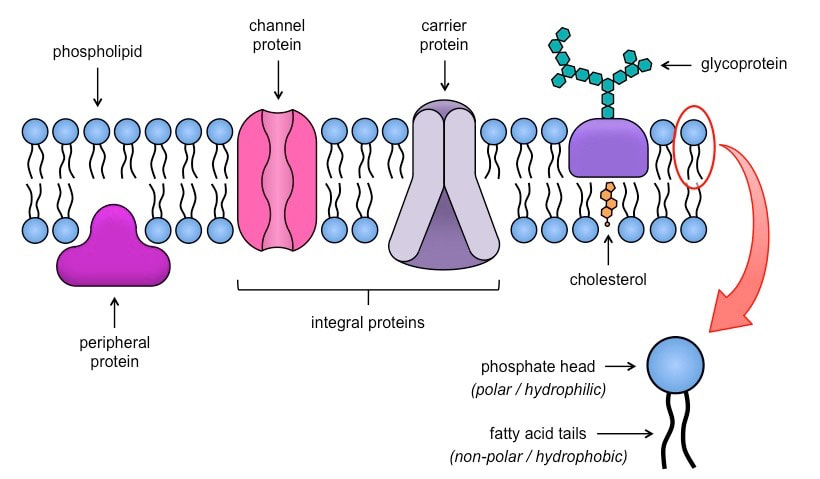


Moving forwards, the structure of cholesterol is covered and students will learn that this hydrophobic molecule sits in the middle of the tails and therefore acts to regulate membrane fluidity. Proteins that act as receptors as also introduced and an opportunity is taken to make a link to an upcoming topic so that students can understand how hormones or drugs will bind to target cells in this way. This introduces the need for transmembrane proteins to allow large or polar molecules to move into the cell by facilitated diffusion and active transport. In a link to some upcoming lessons on the transport mechanisms, the students will learn that only small, non-polar molecules can move by simple diffusion and that this is through the tails of the bilayer. This reminds them of the bilayer arrangement, with the hydrophilic phosphate heads protruding outwards into the aqueous solutions on the inside and the outside of the cell. Students were introduced to phospholipids in topic 2 and so an initial task challenges them to spot the errors in a passage describing the structure and properties of this molecule. The fluid mosaic model is introduced at the start of the lesson so that it can be referenced at appropriate points throughout the lesson. Fully resourced, the PowerPoint and accompanying worksheets have been designed to cover specification point 4.1 (a) of the CIE International A-level Biology specification but as the membranes and target cells are discussed, points 4.1 (b) and © are also partially covered This detailed lesson describes the fluid mosaic model of membrane structure and outlines the roles of the different components.


 0 kommentar(er)
0 kommentar(er)
